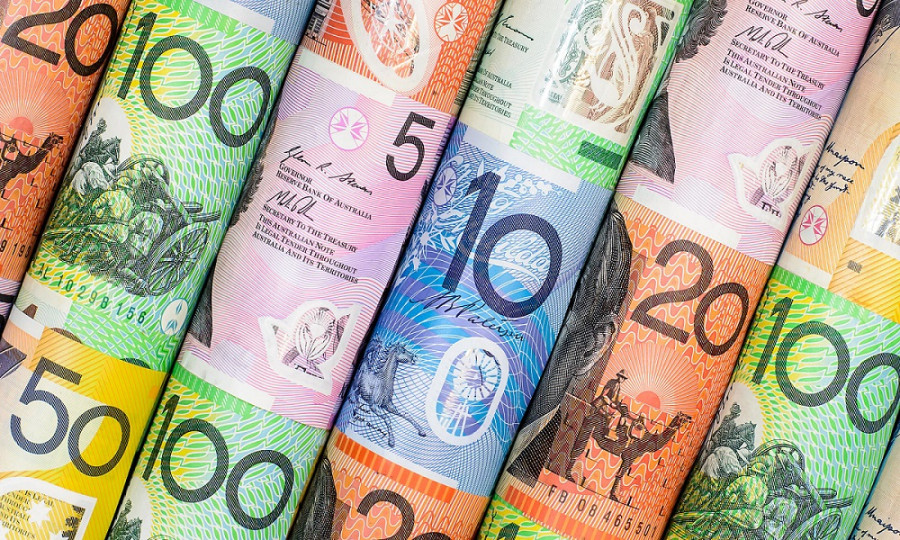For two weeks, the Australian dollar has been trying to gain a foothold against the US dollar in the 0.65 range. Since November 19, AUD/USD traders have been pushing above the 0.6500 target daily, only to retreat to previous levels each time. Essentially, the aussie trades within the 0.6480–0.6550 range, alternately rebounding off its boundaries.
Over nearly two months, the greenback strengthened, causing the AUD/USD pair to decline from its 2024 high of 0.6950 to the current low of 0.6444. However, sellers failed to hold below the 0.6450 support level (the lower line of the Bollinger Bands on the D1 timeframe), allowing buyers to take over temporarily. That said, the buyers haven't managed to reverse the downward trend, as bearish sentiment continues to dominate due to the strong US dollar and the Australian dollar's overall weakness. Renewed downward movement will require an additional catalyst that either strengthens the greenback or weakens the aussie—or both in tandem, creating a "perfect storm" when the Australian comes under pressure against the backdrop of a strengthening US dollar. Such a scenario is plausible if Australian inflation slows and US inflation accelerates. Interestingly, both inflation reports are scheduled for November 27.

During Wednesday's Asian session, Australia will release its October Consumer Price Index (CPI). While the Reserve Bank of Australia (RBA) focuses primarily on quarterly data, monthly reports can also trigger AUD/USD volatility. Most experts anticipate a rise in October's CPI to 2.5%. This could support the Australian dollar. It's worth noting that CPI showed a consistent downward trend from June to September, falling from 4.0% to 2.1%. If inflation accelerates in October, the aussie could strengthen, providing the RBA with additional justification to maintain its current monetary stance.
Later, a different inflation indicator will be released during the US session: the US Core Personal Consumption Expenditures (PCE) Index. This is one of the Federal Reserve's most closely monitored inflation metrics. Forecasts suggest that the PCE index for October will remain unchanged from September at 2.7% (the same level as in August).
In summary, Australian inflation is expected to rise, while one of the key US inflation metrics is projected to stagnate. If both releases align with expectations, AUD/USD will unlikely break out of the current 0.6480–0.6550 range. However, if Australian CPI continues to decline contrary to forecasts, and the US Core PCE Index rises unexpectedly, AUD/USD could face significant downward pressure.
The minutes of the RBA's November meeting, released last week, painted a mixed picture. The central bank acknowledged Australia's economic resilience despite recent disappointing growth rates. It highlighted increased employment (with September's job growth of 64,000, nearly tripling expectations) and wage growth. However, inflation is moving "too slowly" toward the target, which suits the central bank given "prevailing risks."
In contrast, Fed officials, including Powell, Bowman, Cook, and Goolsbee, have all but explicitly hinted at a pause in rate changes at the December meeting. Markets currently estimate a 46% probability of the Fed maintaining rates in December. If the Core PCE Index accelerates contrary to expectations, the scales will tip in favor of a wait-and-see position, and the probability of a pause may rise to 50–55%, lending further support to the greenback.
At present, AUD/USD remains in "wait-and-see" mode. The aforementioned macroeconomic reports could generate heightened volatility, potentially breaking the pair out of its established range: sellers could secure a foothold within the 0.64 range, or buyers might push toward the 0.66 range.
On the D1 timeframe, the pair continues to trade between the middle and lower Bollinger Bands lines, below the Kumo cloud but above the Tenkan-sen line. To confirm an upward movement, buyers need to break above the Kijun-sen line on the daily chart, securing a position above 0.6580. A renewed downward trend would be signaled by a decline below 0.6480 (the Tenkan-sen line in the same timeframe). The Ichimoku indicator would generate a bearish "Parade of Lines" signal in such a scenario. The target for the downward movement would be 0.6410, the lower Bollinger Bands line on D1.
The material has been provided by InstaForex Company - www.instaforex.comfrom Forex analysis review https://ift.tt/AwEWoTf
via IFTTT
